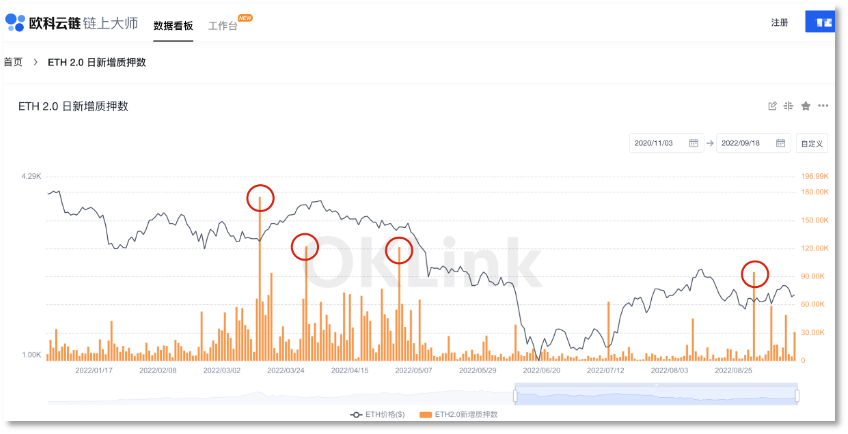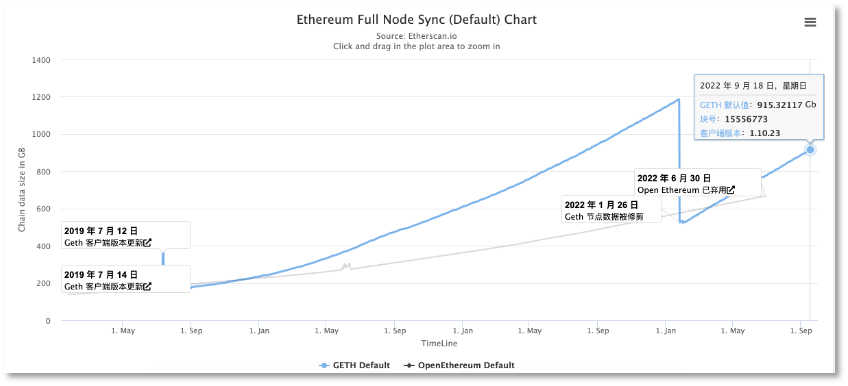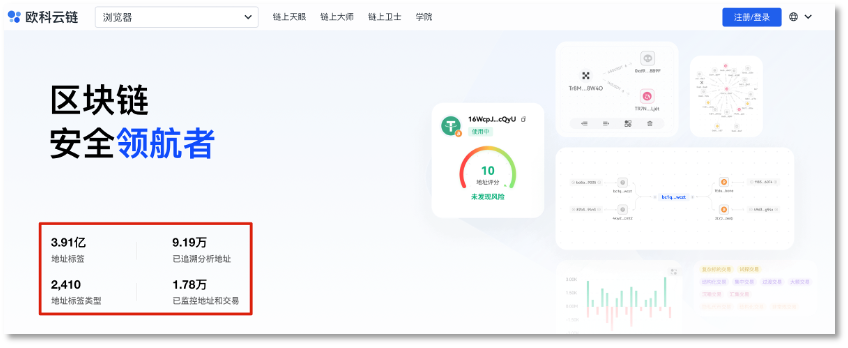People in the Web3.0 Vortex
"What happened, why did the graphics card drop back to the original price?" Immediately, someone asked a question in the "Computer Installation Enthusiasts" circle, and a fellow netizen replied "ETH can no longer be mined".
Ethereum is the decentralized software platform with the largest concentration of blockchain applications in the world. Hundreds of Ethereum applications have been born so far, and it is regarded as one of the underlying infrastructures of Web3.0. On September 15, a historic change took place in the Ethereum network—from the proof-of-work algorithm (PoW) that relies on centralized mining operations to the proof-of-stake algorithm (PoS) that relies on pledged ETH as a verification node, completing the network merger.
The merger of Ethereum directly led to the elimination of graphics card mining machines that mine ETH assets from the chain, which coincided with China's policy of prohibiting encrypted asset mining, and eliminated a group of miners again. This is also one of the reasons why the prices of a large number of mainstream graphics cards have been cut in half recently.
Online game players are only a non-mainstream group affected by the merger of Ethereum. The mainstream group concerned about this matter is still concentrated in the encryption field, including ETH miners, investors, developers of applications on the Ethereum chain, and even Web3.0 investment mechanism. In the encryption world, the merger of Ethereum has become a major event in the industry. People want to see what this blockchain network, which has changed even the consensus mechanism, will bring to the encryption industry and the development of Web3.0, which is still in the super early stage. The change.
first level title
Relying on the data to watch the merger of Ethereum
Daniel looks at ETH’s pledge data every day, “It can help me judge the market’s confidence in Ethereum.” Daniel is one of the many investors in ETH, and one of his two computers is dedicated to watching the K-line , the browser of another computer is filled with webpages of various indicators of encrypted assets, and various indicators of ETH have become the object of his focus recently.
image description

Staking data on the Ethereum beacon chain this year
Data platforms like the OKLink blockchain browser are important sources of information for Daniels to obtain Ethereum data. In addition to looking at the merged data, Li Ao, another participant of the Ethereum network, is also looking at the computing power data of other PoW mechanism blockchain networks. He is an Ethereum miner. After the network did not support mining, the whereabouts of his mining machines became a big problem.
At the beginning of last year, Li Ao spent a lot of money to update the graphics card mining machine he configured overseas. He did not expect that the merger would really come. In March of this year, he pledged a small part of the ETH he mined on the Ethereum beacon chain, "I still want to see what the non-mining Ethereum can bring to the participants," but what about his mining machines? "New graphics cards are falling sharply, mining cards can't be sold at a higher price, and if they don't sell, they can only find a network with the same source as the Ethereum PoW algorithm to continue mining."
Li Ao noticed that the recent computing power index of Ethereum Classic (ETC), which uses the PoW algorithm, has changed.
On September 17, data from the OKLink blockchain browser showed that ETC’s total network computing power for a week reached 144.81TH/s, the 24-hour network computing power increased by 194.27%, and the difficulty of mining on the entire network increased by 184.70% . There is a view that Ethereum miners are migrating to Ethereum Classic. "But the price of ETC less than $40 cannot support the cost of miners." Li Ao waited until the last moment when he could mine ETH. After the merger of Ethereum was completed, he said that he would observe for a period of time before deciding on the whereabouts of the mining machines.
Not only small miners like Li Ao, the listed encryption mining company Hive Blockchain is also evaluating the impact of the merger of Ethereum on itself. The company is already considering mining other PoW network tokens.
In last month's financial report, Hive Blockchain revealed that it will sell mined ETH and expand its plan to mine BTC. As of August 31, the company’s ETH position has dropped from 25,000 ETH to 5,100 ETH. The company has about 38,000 Nvidia graphics cards, including A4000, A5000, A6000 and A40 models, and it has found new jobs for these cards to continue to work, "for cloud computing and artificial intelligence applications, and for engineering applications. rendering, and scientific modeling of fluid dynamics.”
first level title
Data Service Providers Ambush on the Eve of Web3
Hardware players are probably the group that the merger of Ethereum has the greatest impact on the non-encryption circle. But no matter who is watching the Ethereum merger, data is an important tool. This invisible and intangible blockchain network always communicates its changes and development through the continuously generated data on the chain.
All the mysteries of Ethereum are packaged into each of its blocks. Every transaction data that occurs on the chain, the smart contract data built on the chain, and the interaction information of these contracts constitute a block. It is stored on the chain in a secure manner, which can be checked by anyone, but cannot be tampered with by anyone.
Ethereum nodes are like small servers that process network data against the clock. They are the "workers" of Ethereum, working together to support the operation of the network. At present, there are 8,851 “workers” on the entire Ethereum network, and they are distributed in more than 70 countries and regions around the world, including the United States, Germany, Russia, Ireland, Canada, and Hong Kong.
image description

Ethereum full node size up to 915GB
This data volume is only half of the total amount of data generated by industrial enterprises every year, but this 11.5 TB contains all the current information of Ethereum, which is regarded as "Web3.0 infrastructure". Some people predict that when the 2.0 version of Ethereum arrives, the applications on the chain will really explode, and the data will enter the stage of information explosion.
What is the use of these data?
"Ethereum data can almost become a window to look at the bottom layer of Web3.0 in the future." Mugi defined it this way. He is the product manager of the blockchain big data service provider Okey Cloud Chain and participated in the research and development of the company's Ethereum browser project. The development time of about 2 weeks also gave this Web 2.0 practitioner who switched from Tencent a preliminary insight into the openness of Web 3.0.
Massive data can be obtained directly from open source databases. Transaction addresses and smart contract interaction information contain various interesting information. "Although the transaction is anonymous, you can see the user's transaction habits from data analysis, and even From it, you can analyze his preferred transaction time, and you can also see whether the applications that exist on the chain in the form of smart contracts are welcomed by users.”
Mugi said frankly that Web 2.0 companies can certainly analyze data in this way, but the data source is not public, and the analysis is only for internal use. "Open source and shared data are one of the most attractive aspects of Web 3.0."
There are nearly a hundred blockchain data service providers like Okey Cloud Chain in the world. Some of them, like Chainalysis, mainly fight crimes for law enforcement agencies such as the FBI and the Drug Enforcement Administration, and some of them, like Glassnode, provide encrypted assets. Traders provide trading indicators, and like Arcane Research, they also provide data reports for financial institutions and research schools.
There are nearly a hundred blockchain data service providers like Okey Cloud Chain in the world. Some of them, like Chainalysis, mainly fight crimes for law enforcement agencies such as the FBI and the Drug Enforcement Administration, and some of them, like Glassnode, provide encrypted assets. Traders provide trading indicators, and like Arcane Research, they also provide data reports for financial institutions and research schools.
Ethereum is just a blockchain data source mined by data analysis service providers. In terms of the market value of each public chain asset, almost half of the top 100 encrypted assets belong to public chain assets. The public chain networks that generate these ranking assets include Cardano, Solana, Polkadot, etc., which are also known as global mainstream public chains. Competing with Ethereum for the market of Web3.0 underlying infrastructure.
first level title
Web3.0 allows the "eyes of the Internet" to see where it should be seen
We cannot predict the final form of Web 3.0, but its builders are trying to change the current Internet in the image of reformers, although this force has not been taken into account by their opponents.
In the eyes of the public, Ethereum has always been equated with ETH. People who know it put it in the "hype" queue with Bitcoin. Most people don't know that hundreds of applications have been deployed on Ethereum. On the web, people don't even know how to access them. This is still the case with the world's largest public chain, not to mention its competitive chain.
In the world of Web 2.0, things that traffic does not pay attention to are worthless, and big data captures places of interest in traffic all the time, and discovers and even creates business opportunities in this way. This model is moving The Internet age has become a weapon for the expansion of commercial companies.
As early as 2013, Victor Rye Schoenberg predicted in his book "The Era of Big Data" that the information storm brought about by big data is "a big change in life, work and thinking."
In that year, the headquarters of Alibaba Group moved to No. 969 Wenyi West Road, Yuhang District, Hangzhou. Through a series of reorganizations, the migration from PC Internet to mobile Internet was completed. Alipay was spun off from Taobao and became an important third-party payment tool. The big data and cloud computing that Alibaba started in 2009 laid the foundation for the financial business of e-commerce Yige.
It was also that year that Tencent WeChat launched the payment function, and the QR code was regarded by Zhang Xiaolong as the "entrance to the mobile Internet". What was widely questioned at the time has now become an inseparable tool for the public. Scanning has become a way for users to interact with servers. daily.
Today’s headlines should really open up people’s understanding of big data. Every time a user clicks on news or information, it will have an impact on the next time they open the app. Unknowingly, people find, “My news on today’s headlines is always different from yours. ". Relying on algorithm recommendations, Toutiao almost wiped out the portal websites that have dominated the Internet for more than 10 years.
image description

Blockchain data analysis can tag addresses
The eyes of the Internet have indeed brought about changes, but those who are being watched begin to feel uncomfortable. When people who are preparing for a wedding are always pushed by Weibo to advertise the wedding venue, when the stranger on the other end of the phone accurately reports the person's name and ID number, people find that Internet big data is easily obtaining user information. Become the target of precise marketing by merchants, and information leakage will also make people fall into the trap of telecom fraud. But when you want to see real consumer evaluations on Taobao and Pinduoduo, doubts are always accompanied by consumer experience.
Web 2.0 is losing the trust of traffic, but Web 3.0 still needs these eyes. The difference is that the "eyes of Web 3.0" will not see everything about users. "We can analyze the behavior of the address, but we cannot determine the identity of the address." This is determined by the inherent anonymity of the blockchain, unless it interacts with a platform that requires real-name registration.”
Ethereum, which is still unknown to the public, is trying to change the disadvantages of Web2.0 - starting from Web3.0, allowing users' data to return to themselves, including ownership and use rights. Software programs can no longer obtain user information and data free of charge. Consent and authorization are no longer a single overlord clause. When users do not want the program to be used, they can cancel the authorization at any time.
After the emergence of Web3.0, which respects user rights and protects user privacy, what challenges will data processing face?
Recently, after the U.S. Department of the Treasury banned Tornado Cash, an encrypted asset privacy tool, there were voices of resistance in the encrypted community, which allowed Jiang Zhaosheng to see the test faced by future blockchain data service providers. Censorship, which requires data service providers to be able to effectively and accurately identify the data on the chain, and separate the perpetrators who use it from ordinary users, so as to benefit users and crack down on behaviors that infringe users.”
From 2020, China is advocating the development of blockchain, but it needs to be separated from cryptocurrencies. Since then, the alliance chain has become the key research and development object of domestic Internet companies. In Jiang Zhaosheng’s view, even if China does not advocate the development of the public chain, it cannot ignore the data research on the public chain as the infrastructure of Web3. In the current economic and data security environment, it is necessary to prepare in advance.”
Mugi describes a future: based on the blockchain Web3.0, the data must be transparent, open, and real, and users can check and verify it at any time, while data processors stand on the same starting line, because the data source acquisition The efficiency problem has been solved, and the real moat is who can quickly give data and analysis, who can deeply understand the ecology of the chain, and output the speed and understanding to the demand side in the form of products.
If talent is the most expensive in the 21st century, then in the era of Web3.0, data will no longer be cheap. Its value is not only for insight into Web3.0, but also for the security of the next generation of Internet. Chainalysis is already creating "weapons" for the United States to fight against cryptocurrency crimes, and the domestic Okeyyun Chain is also providing assistance to law enforcement agencies that protect the property safety of Chinese people. Big data has brought about the prosperity of Web2.0, but also the risk of improper use of data. Lessons learned from the past may provide a strategic foresight for the data age of Web3.0.
(Daniel, Leo, and Mugi are all pseudonyms in the text)



